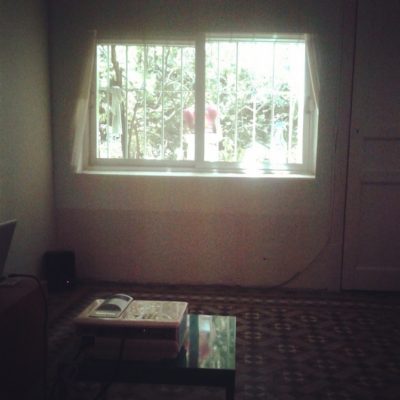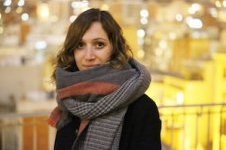Search
To search for an exact match, type the word or phrase you want in quotation marks.
A*DESK has been offering since 2002 contents about criticism and contemporary art. A*DESK has become consolidated thanks to all those who have believed in the project, all those who have followed us, debating, participating and collaborating. Many people have collaborated with A*DESK, and continue to do so. Their efforts, knowledge and belief in the project are what make it grow internationally. At A*DESK we have also generated work for over one hundred professionals in culture, from small collaborations with reviews and classes, to more prolonged and intense collaborations.
At A*DESK we believe in the need for free and universal access to culture and knowledge. We want to carry on being independent, remaining open to more ideas and opinions. If you believe in A*DESK, we need your backing to be able to continue. You can now participate in the project by supporting it. You can choose how much you want to contribute to the project.
You can decide how much you want to bring to the project.

Lately I’ve been asking myself why there are so many domestic exhibitions, why have people begun to mount exhibitions in their own house. And I ask myself as if there couldn’t be any other reason, as now it seems that things only happen as a consequence of that “slight de-acceleration” that Zapatero announced in 2007.
I have no idea what led Alberto and Sinéad of Halfhouse to begin programming exhibitions in their house, to mention just one case that I believe serves as a precedent for what is happening at the moment. I’m not sure if when they began to do so it was also due to the obtuse and increasingly antiquated state of the institutions at that time, because I’m not even sure if at that time the institutions were already headed that way. I was an adolescent in a small town on the “plain” of Vic, playing basketball with friends in the square in front of my house.
What I am sure about is if only we could say now that “just” the institutions are in an obtuse and antiquated state, without batting an eyelid. But no, everything is totally degraded, one just has to see the grave state that the AAVC finds itself in or the sad situation of Can Felipa, without forgetting all those spaces that have already closed. If years ago anyone starting up could count on a large number of open calls and centres that interested them, that could proportion money to carry on with a project and gain certain recognition, now this list is ever shorter. If to all of this one adds the general pessimism, it ends up becoming an explosive cocktail that, either it paralyses us or makes the ambience reverberate with an echo of panic and hysteria that tells us we’ll have to work very hard and invent a thousand and one ways to have a life half as decent as the one we had before.
Probably because of this, in the last few months I’ve seen more exhibitions in private spaces than in museums. And I find it understandable, if in the institutions there is even less room than before for things to happen, that other more accessible and porous contexts are created. These contexts can only arise in those spaces and in formats that one has within reach.
All this isn’t so different from how many collectives of illustrators function self-publishing small publications to make their works known, one clear example of which is the highly active collective Tropèl. On the other hand, within the world of music one can also find a large number of groups who self-publish themselves: from the first record of La Iaia, to the last two of Antònia Font and even the latest record of Raphael. In the art system in Barcelona it seem that these customs are not so usual. Maybe this is due to the fact that illustration and music are understood as products of the culture industry and contemporary art, on the other hand, has always found a way of making itself visible by promoting itself thanks to those doors that were opened by institutions, that we now watch close.
But new and small ones are opening that even though they have less visibility they are without a doubt more heterogeneous and sustainable.
The very exhibition, “A Place No Cars Go” that Quim Packard curated in his studio last December, amongst other things pointed along these lines: a sort of return to DIY culture, that initially perhaps reached our society as a fad, but I’m sure will stay and remain out of necessity, because if not, there is nothing else, or at least nothing that makes it possible to work with freedom and at the same time satisfy the urgency to do things. Some examples of recent cases related with this form of organising exhibitions in spaces that until now were private and not for exhibitions are; the initiative El Palomar, of R. Marcos Mota and Mariokissme, that just like the space, El Passadís, run by Caterina Almirall and Natalia Calderón, aims to follow a specific and active exhibition programme, that makes it possible to show artistic projects that for one reason or another have not found their place within the institutional framework.
Alba Benavent also decided to take on the role of curator for the first time and did so in her house, with the exhibition “Como en casa” that lasted only two hours (4 April, from 7.30pm to 11pm) and included works by Paula Giménez, Daniela Ortiz and Leonor Serrano Rivas. One would have to say that in this case, unlike in “El Passadís” and “El Palomar”, all the works exhibited had in their time received institutional support. The video “Verano”, by Giménez was selected for the Sala de Arte Joven in the 2011 open call; “Colección Privada” and “Parcela 1C”, by Serrano Rivas, received the second prize by Injuve 2012 and “97 House Maids”, by Ortíz,was also awarded a prize by Injuve 2011.
In any case, what these forms of activity denote is that there is an increasing disregard for the institution and there seems to be a growing need to create new contexts far from anything that depends on a governmental body.

Anna Dot was born on a Sunday in April. She is from Torelló and works between two worlds, worlds that she cannot perceive as being in any way separate: one of artistic production and one of reflection, writing about contexts of art.
"A desk is a dangerous place from which to watch the world" (John Le Carré)